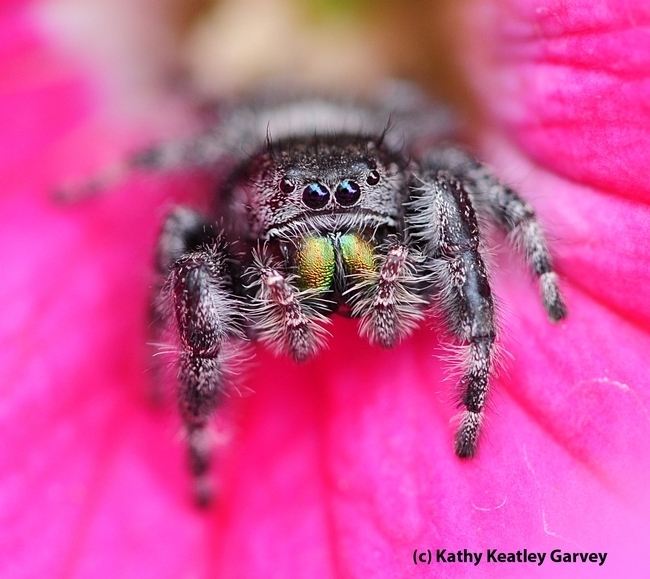
Eating her curds eating and whey
Along came a spider who sat down beside her
And frightened Miss Muffet away
(English nursery rhyme recorded in 1805)
What, Miss Muffet ran away? Obviously, she had no career plans to become an arachnologist or to celebrate "National Save a Spider Day."
Today, you know, is "National Save a Spider Day."
I did not save a spider today.
I did see one, however, on a cactus in our yard, but he/she did not need saving. It was a bold jumping spider, Phidippus audax, which boldly jumped off the cactus when I raced into the house to retrieve my camera.
"National Save a Spider Day" is a good time to remind you that the University of California, Davis, will be the site of the 2022 American Arachnological Society (AAS) convention, set from Sunday, June 26 through Thursday, June 30.
It will be hosted by two UC Davis arachnologists: Jason Bond, the Evert and Marion Schlinger Endowed Chair in Insect Systematics, UC Davis Department of Entomology and Nematology, and associate dean, College of Agricultural and Environmental Sciences; and Joel Ledford, assistant professor of teaching, Department of Plant Biology, College of Biological Sciences. Formal meeting registration will begin Sunday afternoon, June 26, followed by an evening reception. A local daylong field trip is planned for Thursday, June 30. (Pre-register for the meeting here.)
Bond says that in collaboration with the UC Davis Bohart Museum of Entomology and the University of Nebraska, “we will also host a pre-meeting, outreach event, ‘Eight-Legged Encounters' for the Davis community and campus. It's tentatively planned for Saturday, June 25. Those interested in attending should contact Bond at jbond@ucdavis.edu.
Spider Information. The AAS website is a great place to learn about spiders--and to ask questions.
If you want to start learning about common spiders found in California, the UC Statewide Integrated Pest Management Program website provides basic information on black widow spiders, jumping spiders, hobo spiders, common house spiders, and tarantulas, among others. A table, illustrated with photos, lists the common spider families in North America.
The Bohart Museum offers several fact sheets on its website about spiders: Sac spiders, wolf spiders, cellar spiders, recluse spiders/brown recluse, widows and jumping spiders. The Bohart also provides information on spider bites. (Bites? Probably what Miss Muffet "who sat on a tuffet eating her curds and whey" was afraid of? Or maybe she didn't want to share her lunch?)
We've seen spiders NOT sharing their lunch of honey bees, syrphid flies, lady beetles and lygus bugs.
Attached Images:
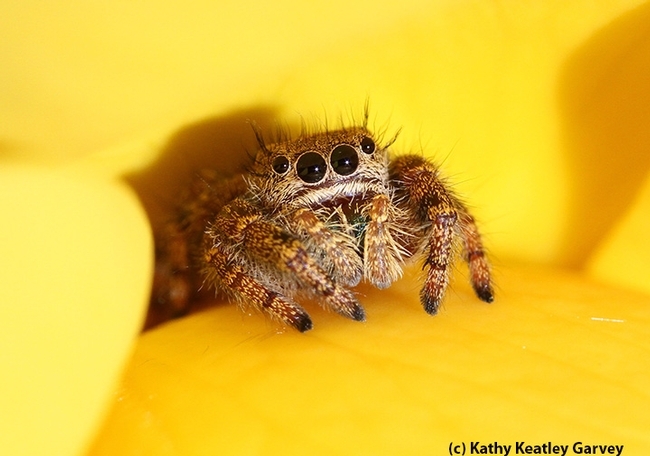
A jumping spider on a yellow rose peers at the photographer. (Photo by Kathy Keatley Garvey)

A banded garden spider (Argiope trifasciata) straddling lavender stems. (Photo by Kathy Keatley Garvey)
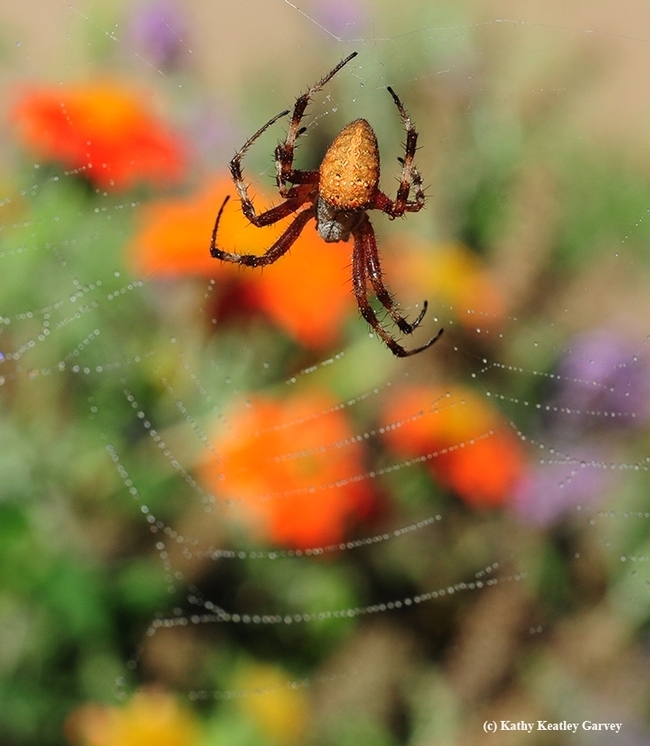
A redfemured spotted orbweaver, Neoscona domiciliorum, is hungry. (Photo by Kathy Keatley Garvey)
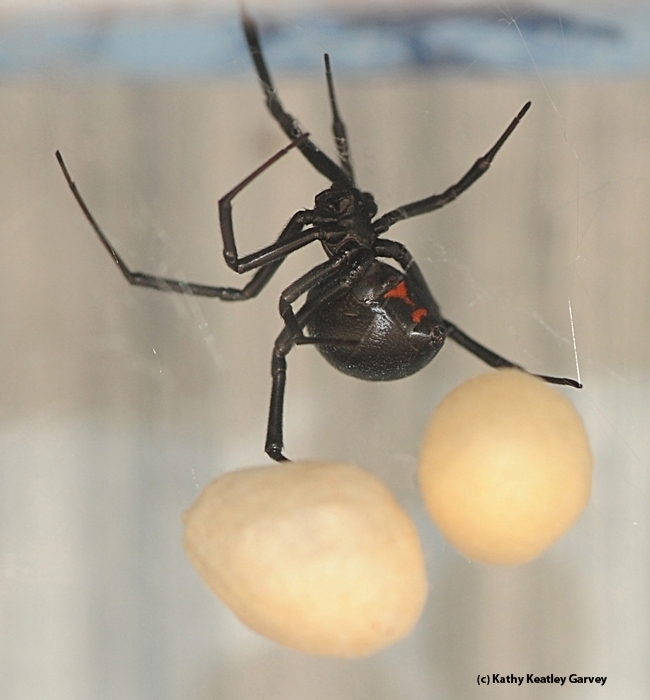
A black widow spider balances her egg sacs. (Photo by Kathy Keatley Garvey)
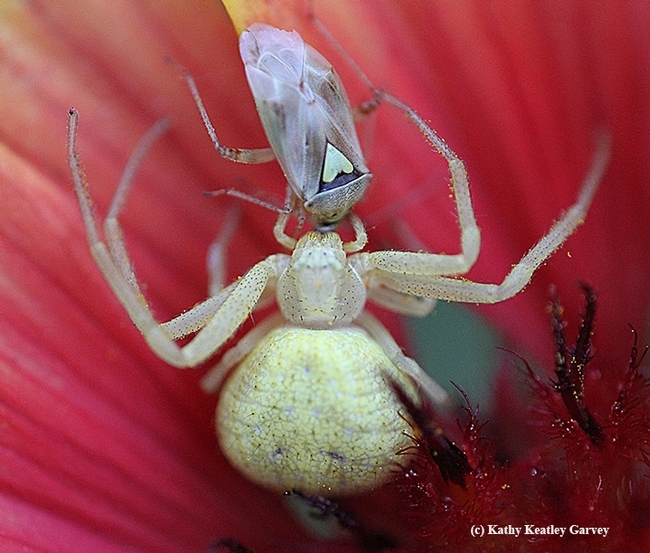
Lunch time! A crab spider feasts on a pest, a lygus bug. (Photo by Kathy Keatley Garvey)

A bold jumping spider trying to grab a honey bee. The honey bee did not need saving. (Photo by Kathy Keatley Garvey)